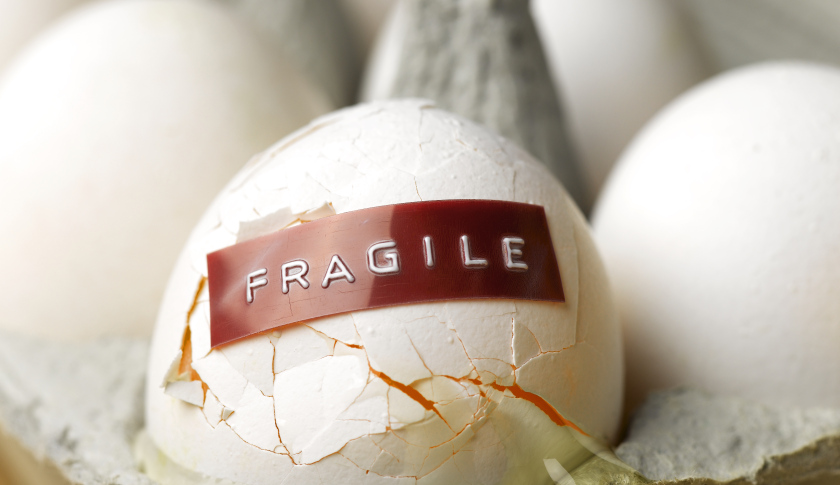Last week, Apple and Facebook created a media firestorm after announcing that their lush benefit packages will now include egg freezing coverage. But lost in the theoretical discussions about the merits of this perk are more realistic considerations.
本月,苹果(Apple)与Facebook相继宣布将把卵子冷冻加入到其“福利大礼包”中,这一消息迅速引发媒体热议。然而,在一大堆关于这项福利优点的理论性探讨中,却没有人考虑到一些更加现实的因素。

The cavalier marketing of whizzy egg freezing is clearly working if two of the largest tech companies are signing up to pay for it. Yet knowing what I know now about reproductive medicine, I would advise any woman considering this risky surgical procedure to consider that egg freezing–using startup lingo–is the very high-risk “A round.” It is a long, long way from a successful exit.
如果这两家最大的科技公司最终同意出钱,那说明,对高科技卵子冷冻技术不负责任的营销取得了效果。然而就笔者对生殖医学的了解,我建议想要接受这项高风险手术的女同胞,首先应该想到,卵子冷冻,用创投界的行话来说,只是高风险的“首轮融资”,离成功退出的圆满结局还有很长的距离。
Egg freezing is far from settled science. In the UK, which is one of the few countries to track and account for fertility treatment outcomes, only 20 babies have been born from frozen eggs, according to the Human Fertilisation and Embryology Authority (HFEA). And no one knows for sure how egg freezing chemicals are absorbed by eggs, or how they affect cell development.
卵子冷冻远算不上一门成熟的科学。英国是少数几个跟踪和公布生育治疗结果的国家之一。据英国人类受精与胚胎管理局(Human Fertilisation and Embryology Authority,HFEA)统计,迄今为止,靠冷冻卵子出生的婴儿仅有20个。而且谁也不能确定,冷冻所用化学物质有多少会被卵子吸收或影响细胞发育。
For a 38-year-old woman, the chance of one frozen egg leading to a live birth is only 2% to 12%, according to the American Society for Reproductive Medicine (ASRM). This is a key finding given that the average age of non-medical egg freezing customers in the U.S. is 37.4.
美国生殖医学会(American Society for Reproductive Medicine,ASRM)统计,对一位38岁的女性来说,一个冷冻卵子成功生出婴儿的概率仅有2-12%。这项调查结果非常关键,因为美国非医疗卵子冷冻的客户平均年龄便是37.4岁。
Amid the latest tech perk bragging rights, sobering facts about the procedure’s limitations and the associated risks have been overlooked and underreported.
最近科技公司的福利被大肆吹捧的时候,人们却忽视了卵子冷冻的局限性和相关风险这些值得深思的事实,媒体更是鲜有报道。
First, most people don’t realize the American College of Obstetricians and Gynecologists and the ASRM do not endorse the use of egg freezing to defer childbearing. The ASRM’s decision to lift the “experimental” label from this still young procedure in 2012 only applied to medically indicated need, such as women with cancer.
首先,大多数人并未意识到,美国妇产科医师协会(American College of Obstetricians and Gynecologists)和ASRM并不赞成通过卵子冷冻来推迟生育。ASRM取消该项新兴技术“实验性质”的决定,仅适用于医学需要,例如患有癌症的女性。
Second, there are no guarantees for a successful or healthy pregnancy and delivery. In order to attempt pregnancy, egg freezing must be followed by in vitro fertilization (IVF) with another laboratory procedure, a technique known as ICSI (Intracytoplasmic Sperm Injection). For the latest flash freezing process trumpeted by enterprising fertility clinics and a host of profit-driven service providers, the most comprehensive data available reveals a 77% failure rate of frozen eggs resulting in a live birth in women aged 30, and a 91% failure rate in women aged 40.
其次,该技术没有成功或健康怀孕和生产的保证。为了怀孕,卵子冷冻必须配合另外一套实验室程序——体外受精(IVF),该项技术被称为ICSI(卵母细胞胞浆内单精子注射)。以企业性质的生育诊所和大批以盈利为目的的服务商所鼓吹的最新瞬间冷冻技术为例,最全面的数据显示,30岁女性冷冻卵子活产失败率为77%,而40岁女性的失败率高达91%。
But the dry statistics don’t take into account the very real emotional strain and trauma that often accompanies artificial reproduction and their frequent failures. Silicon Valley celebrates success. Even business failure can be accepted as an opportunity to learn. But failure takes on a much deeper personal meaning when it involves parenthood expectations.
然而,枯燥的统计数据并未考虑到人工生殖及其频繁的失败所带来的真实情感压力与创伤。硅谷赞颂成功。即使经营失败也会被认为是学习的机会。但当上父母的期望落空,对于个人却有着更深层的影响。
I have seen the good, the bad and the ugly where fertility medicine is concerned. The first time I visited a fertility clinic I was 33 and in great health. I met with an ASRM affiliated doctor who received his training at Stanford University. My attempts were paid out of pocket (none of my employers offered infertility benefits). I pursued increasingly complex procedures including egg retrievals and ICSI IVF with both fresh and frozen embryo transfers.
我曾见证过生育医学好的、坏的和丑陋的各个方面。我第一次去一家生育诊所,只有33岁,身体健康。我遇到一位附属于ASRM的医生,他在斯坦福大学(Stanford University)接受过培训。当时我的费用全部是自掏腰包(我的雇主没有提供不孕不育福利)。我经历了越来越复杂的程序,例如取卵,ICSI IVF,包括新鲜胚胎与冷冻胚胎植入。













